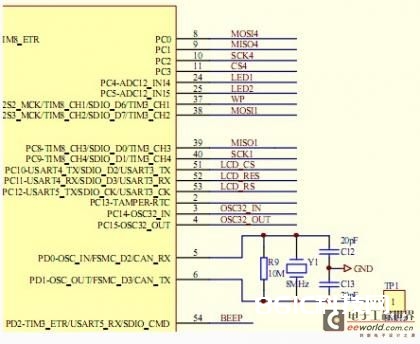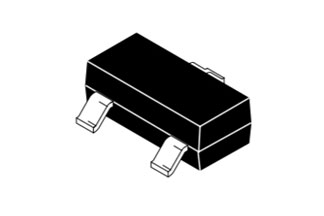以下是硬件电路图,主芯片为stm32rbt6.

贴上代码
void SPI_FLASH_Init1(void)//io初始化装备
{
GPIO_InitTypeDef GPIO_InitStructure;
RCC_APB2PeriphClockCmd(RCC_APB2Periph_GPIOA | RCC_APB2Periph_GPIOC, ENABLE);
GPIO_InitStructure.GPIO_Pin = GPIO_Pin_7 | GPIO_Pin_9;//CS CLK
GPIO_InitStructure.GPIO_Mode = GPIO_Mode_Out_PP;
GPIO_InitStructure.GPIO_Speed = GPIO_Speed_50MHz;
GPIO_Init(GPIOC, &GPIO_InitStructure);
GPIO_InitStructure.GPIO_Pin = GPIO_Pin_8 ;
GPIO_InitStructure.GPIO_Mode = GPIO_Mode_IN_FLOATING; //MOSI要用模仿输入
GPIO_InitStructure.GPIO_Speed = GPIO_Speed_50MHz;
GPIO_Init(GPIOC, &GPIO_InitStructure);
GPIO_InitStructure.GPIO_Pin = GPIO_Pin_8;
GPIO_InitStructure.GPIO_Mode = GPIO_Mode_Out_PP;//MISO
GPIO_InitStructure.GPIO_Speed = GPIO_Speed_50MHz;
GPIO_Init(GPIOA, &GPIO_InitStructure);
//要害在读取函数
//包含读取和发送
u8 SPIx_FLASH_SendByte(u8 byte)
{
uint8_t i;
u8 Temp=0x00;
unsigned char SDI;
for (i = 0; i < 8; i++)
{
GPIO_SetBits(GPIOC, GPIO_Pin_9);//sclk = 0;//先将时钟拉高
if (byte&0x80)
{
GPIO_SetBits(GPIOC, GPIO_Pin_7); // //SO=1
}
else
{
GPIO_ResetBits(GPIOC, GPIO_Pin_7);// //SO=0
}
byte <<= 1;
GPIO_ResetBits(GPIOC, GPIO_Pin_9);// //sclk = 1; 拉低时钟
SDI = GPIO_ReadInputDataBit(GPIOC, GPIO_Pin_8);//判别si是否有输入
Temp<<=1;
if(SDI) //读到1时
{
Temp++; //置1 即向右移动一位一起加1 因上边有<<=1
}
GPIO_SetBits(GPIOC, GPIO_Pin_9);//sclk = 0;// 拉高时钟
}
return Temp; //回来读到miso输入的值
}
}
//下面是以读写spi flash为例详细的完成
//此函数中 时钟机时序很重要。Cs在读写中只能呈现一次,不能在sendwrite
//读写里面有,被调用时还呈现,就必定不行了。
//其它函数宏界说
#define BUFFER_1_WRITE 0x84 // buffer 1 write
#define BUFFER_2_WRITE 0x87 // buffer 2 write
#define BUFFER_1_READ 0x54 // buffer 1 read (change to 0xD4 for SPI mode 0,3)
#define BUFFER_2_READ 0x56 // buffer 2 read (change to 0xD6 for SPI mode 0,3)
#define B1_TO_PAGE_WITH_ERASE 0x83 // buffer 1 to main memory page program with built-in erase
#define B2_TO_PAGE_WITH_ERASE 0x86 // buffer 2 to main memory page program with built-in erase
#define B1_TO_PAGE_WITHOUT_ERASE 0x88 // buffer 1 to main memory page program without built-in erase
#define B2_TO_PAGE_WITHOUT_ERASE 0x89 // buffer 2 to main memory page program without built-in erase
#define PAGE_PROG_THROUGH_B1 0x82 // main memory page program through buffer 1
#define PAGE_PROG_THROUGH_B2 0x85 // main memory page program through buffer 2
#define AUTO_PAGE_REWRITE_THROUGH_B1 0x58 // auto page rewrite through buffer 1
#define AUTO_PAGE_REWRITE_THROUGH_B2 0x59 // auto page rewrite through buffer 2
#define PAGE_TO_B1_COMP 0x60 // main memory page compare to buffer 1
#define PAGE_TO_B2_COMP 0x61 // main memory page compare to buffer 2
#define PAGE_TO_B1_XFER 0x53 // main memory page to buffer 1 transfer
#define PAGE_TO_B2_XFER 0x55 // main memory page to buffer 2 transfer
#define STATUS_REGISTER 0x57
#define MAIN_MEMORY_PAGE_READ 0x52 // main memory page read (change to 0xD2 for SPI mode 0,3)
#define PAGE_ERASE 0x81 // erase a 264 byte page
#define BULK_ERASE 0x50 // erase 8 pages
#define WIP_Flag 0x80
#define Dummy_Byte 0xA5
AT45DB系列的读写函数
void AT45xxReadx(uint32_t Num,uint32_t PageAddr, uint32_t ByteAddr, uint8_t *
Data, uint32_t ByteNum)
{
SPIx_FLASH_PageToBuffer2(Num,PageAddr);
SPIx_FLASH_Buffer2Read(Num,Data, ByteAddr, ByteNum);
}
写函数
void AT45xxWritex(uint32_t Num,uint32_t PageAddr, uint32_t ByteAddr, u8 *Data
, uint32_t ByteNum)
{
uint32_t i;
u8 aa[100];
if((ByteNum <= (528 - ByteAddr))&&(ByteNum > 0))
{
SPIx_FLASH_WaitForWriteEnd(Num);
// while(!(Rat45_status()& 0x80 )); //判别是否忙
SPIx_FLASH_CS_LOW(Num);
SPIx_FLASH_SendByte(Num,0x82);
// SPIx_ReadWriteByte(0x82);
// SPIx_ReadWriteByte((uint8_t)(PageAddr>>6));
// SPIx_ReadWriteByte((uint8_t)((PageAddr<<2)|(ByteAddr>>8)));
// SPIx_ReadWriteByte((uint8_t)ByteAddr);
SPIx_FLASH_SendByte(Num,(uint8_t)(PageAddr>>6));
SPIx_FLASH_SendByte(Num,(uint8_t)((PageAddr<<2)|(ByteAddr>>8)));
SPIx_FLASH_SendByte(Num,(uint8_t)ByteAddr);
for(i = 0; i < ByteNum; i++)
{
SPIx_FLASH_SendByte(Num,Data[i]);
// SPIx_ReadWriteByte(Data[i]);
// SPIx_FLASH_SendByte(Num,Data[i]);
}
SPIx_FLASH_CS_HIGH(Num);
}
}
void SPIx_FLASH_WaitForWriteEnd(uint32_t Num)
{
unsigned char FLASH_Status = 0;
SPIx_FLASH_CS_LOW(Num);
SPIx_FLASH_SendByte(Num,STATUS_REGISTER);
do
{
FLASH_Status = SPIx_FLASH_SendByte(Num,Dummy_Byte);
}
while ((FLASH_Status & WIP_Flag) == RESET);
SPIx_FLASH_CS_HIGH(Num);
}
void SPIx_FLASH_Buffer2Read(uint32_t Num,u8* pBuffer, u32 ReadAddr, u16
NumByteToRead)
{
SPIx_FLASH_WaitForWriteEnd(Num);
// while(!(Rat45_status()& 0x80 )); //判别是否忙
SPIx_FLASH_CS_LOW(Num);
SPIx_FLASH_SendByte(Num,BUFFER_2_READ);
SPIx_FLASH_SendByte(Num,Dummy_Byte);
SPIx_FLASH_SendByte(Num,(ReadAddr& 0xFF00) >> 8);
SPIx_FLASH_SendByte(Num,ReadAddr & 0xFF);
SPIx_FLASH_SendByte(Num,Dummy_Byte);//
while (NumByteToRead–)
{
*pBuffer = SPIx_FLASH_SendByte(Num,Dummy_Byte);
pBuffer++;
}
SPIx_FLASH_CS_HIGH(Num);
}
void SPIx_FLASH_CS_LOW(uint32_t Num)
{
switch(Num)
{
case 0: GPIO_ResetBits(GPIOB, GPIO_Pin_12); break;
case 1: GPIO_ResetBits(GPIOA, GPIO_Pin_8); break; //U6
case 2: GPIO_ResetBits(GPIOA, GPIO_Pin_7); break; //U7
case 3: GPIO_ResetBits(GPIOA, GPIO_Pin_3); break; //U8
case 4: GPIO_ResetBits(GPIOC, GPIO_Pin_3); break; //U9
default:break;
}
}
void SPIx_FLASH_CS_HIGH(uint32_t Num)
{
switch(Num)
{
case 0: GPIO_SetBits(GPIOB, GPIO_Pin_12); break;
case 1: GPIO_SetBits(GPIOA, GPIO_Pin_8); break; //U6
case 2: GPIO_SetBits(GPIOA, GPIO_Pin_7); break; //U7
case 3: GPIO_SetBits(GPIOA, GPIO_Pin_3); break; //U8
case 4: GPIO_SetBits(GPIOC, GPIO_Pin_3); break; //U9
default:break;
}
}









